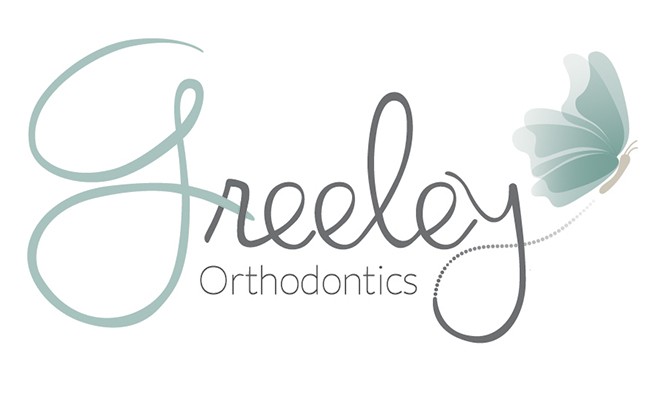What’s Better: Braces Or Aligners?
 By Dr. M. Constance Greeley
By Dr. M. Constance Greeley
With today’s new orthodontic technology offering treatment choices, this question is a sensible one  asked by patients of all ages.
asked by patients of all ages.
In our office, the decision is based on a thorough exam, review of medical/dental history and getting to know the patient. Presented below are two cases that were treated with different methods. The patients are siblings. The decision to select the most appropriate treatment modality was based on factors uncovered by a thorough understanding of both the patients’ needs and motivations.
Ted was 13 years of age at his first meeting with us. Although he was still growing, his skeletal pattern was balanced, so treatment was delayed until Ted had his permanent teeth in place. We saw him periodically until he was dentally mature enough to begin treatment. This kept Ted’s treatment options open to selecting either braces or aligners.
Photos 1, 2 & 3 show that our major concerns were Ted’s deep bite (vertical overbite) and crowding while his jaw relationship remained quite good. After consul-tation with Ted and his parents, where we discussed both braces and aligners, we agreed to use aligners to address these issues. Our treatment goals included opening his deep bite and aligning the teeth while maintaining the good intermeshing of his back teeth. He began treatment at age 15.
To be effective, aligners must be worn faithfully 21 hours per day and are removed only for eating, brushing, and flossing. Some teeth require tooth-colored attachments that help to hold the aligners in place. We also recommend the use of “chewies” to help set the aligners.
After 8 months of faithfully wearing aligners, using “chewies” and staying on track, Ted achieved a great response. See photos 4, 5 & 6.
His sister Amy was 13 years of age when we began her treatment. She had a reasonably good bite but also had some issues with alignment and eruption of permanent teeth as well as crowding. While these findings did not rule out using aligners, it would require a longer treatment time. After some discussion we agreed that braces were a better option for Amy since she did not feel she could commit to wearing the aligners faithfully over the treatment time needed. See photos: 7, 8 & 9.
Amy did well with her braces, wore elastics as needed and achieved a great result. Her treatment took 18 months. See photos 10, 11 & 12.
I attribute the success of both treatments to listening to the patients and parents and to responding to their concerns and motivations. Of course, we cannot always offer both modalities as more complex cases may not allow an aligner option for treatment. Still, we continue to be impressed with the use of aligners and how much can be accomplished with them. If you think wearing aligners is something that would benefit your smile, OR if you feel braces may be a better option for you, please give us a call for a complimentary in-office or virtual consult.
Bio
Dr. Connie Greeley went to Temple University School of Dentistry where she received her Doctor of Dental Surgery degree. She earned her certification in Pediatric Dentistry at the University of Maryland and then returned to Temple University for her certification in Orthodontics.
Dr. Greeley is board-certified by the American Board of Orthodontics. She serves on the Cleft Palate Team at A.I. DuPont Hospital for Children. Dr. Greeley is past-president of the Delaware State Dental Society, the Middle Atlantic Society of Orthodontists, and the Greater Philadelphia Society of Orthodontics. She is a member of the ADA and the AAO.
Transform your life with a beautiful smile at:
Greeley Orthodontics, PA
400 Old Forge Lane, Suite 406
Kennett Square, PA 19348
484-346-7846


